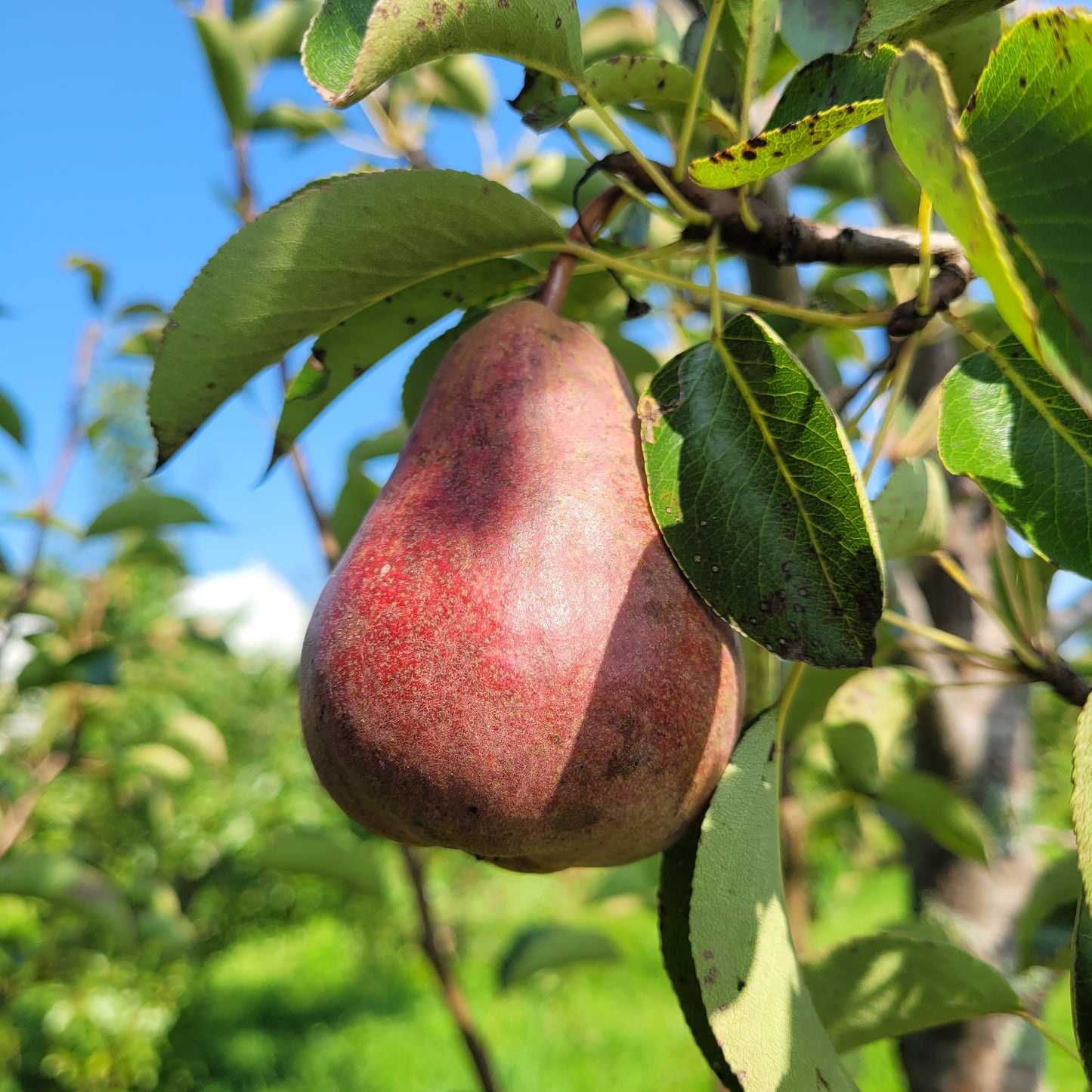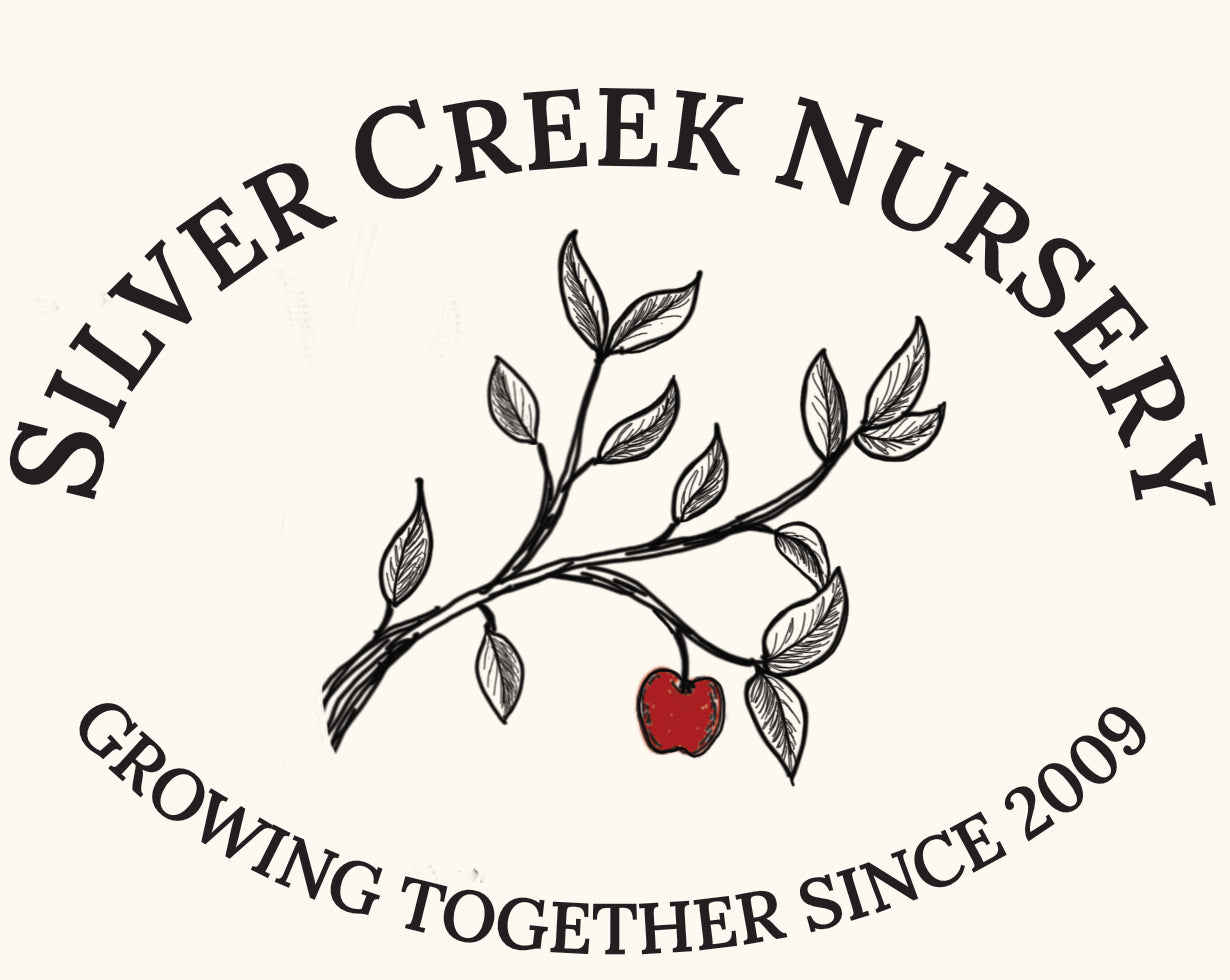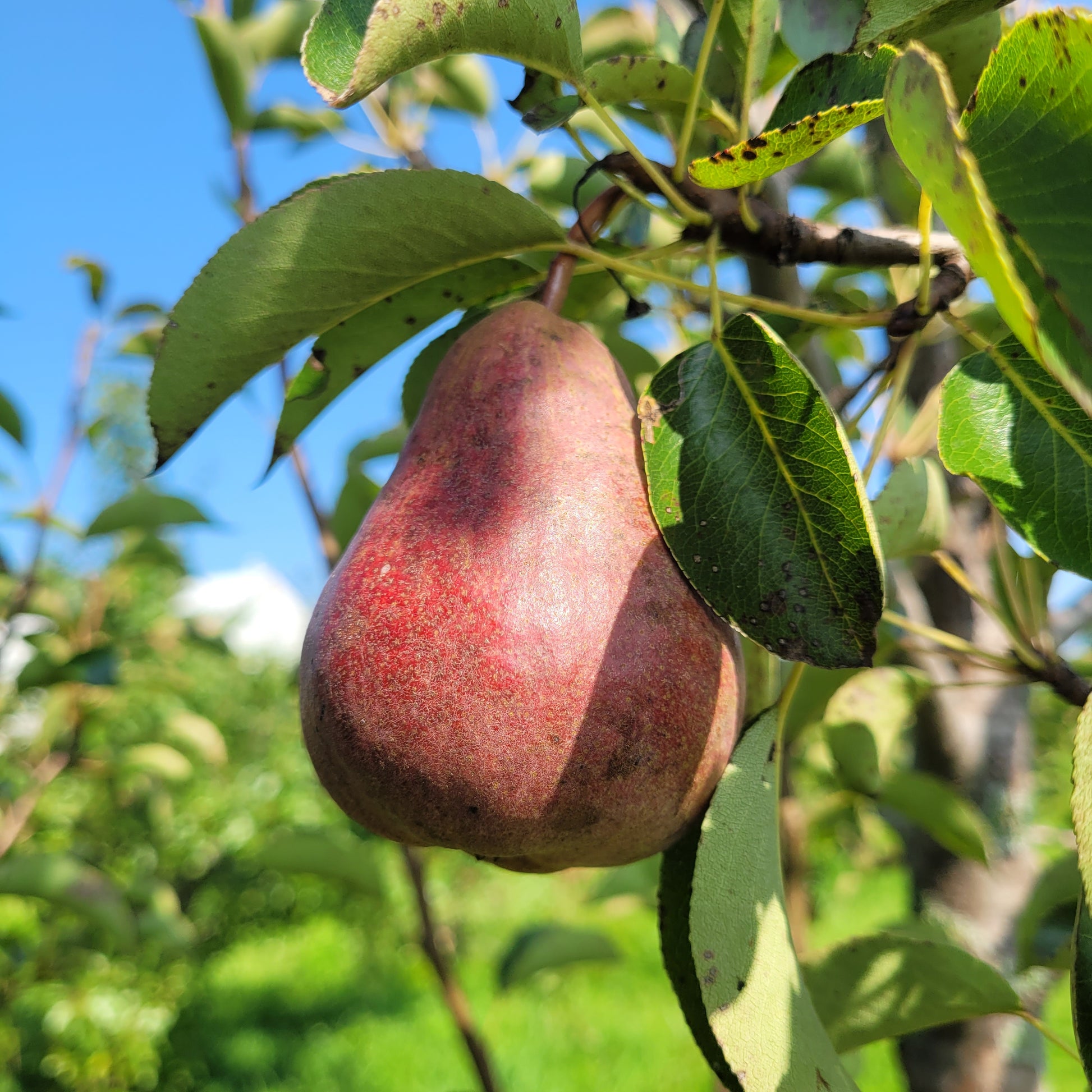Mixed Source
Sensation Red Bartlett Pear
Sensation Red Bartlett Pear
History: Sensation Red Bartlett, a sport or mutation of Bartlett, was discovered as a random mutation on a Bartlett tree growing in Australia in the 1930s. Thanks to its unique red skin and sweeter taste, it was eventually introduced commercially around 1960. It is most commonly grown in Australia and New Zealand.
Why We Grow It: A sport of Bartlett, this pear has the best features of its predecessor but boasts a higher sugar content and cheery red skin. For anyone who is a fan of Bartlett pears and unique yet delicious varieties, this pear is an excellent choice.
Fruit Specs
Fruit Specs
Recommended Use: Fresh eating
Fruit Size: Medium
Storage: Lasts a couple weeks at most when stored in cool, humid conditions
Harvest: September - Mid
Perry Class:
Growing Specs
Growing Specs
Canadian Hardiness Zone: 5
Soil Preference: Sandy loam, loam, clay loam, intolerant of chalky soils. Prefers average to moist conditions with well-drained soils, avoid planting anywhere that floods for more than two weeks in the spring.
Flowering Time: Middle
Bloom Colour: White
Pollination Requirements: Requires a pollinator of a different pear variety (European or Asian) that blooms around the same time. This variety is incompatible with Seckel.
Sun/Shade Requirements:
Full sun (approx. 8-10 hours of sun daily)
General Growth Habits:
Moderate vigor and hardy with a spreading growth habit, has good crops, spur bearing. Susceptible to mildew and fireblight but resistant to scab and tolerant of stony pit.
Shipping vs. Pick Up
Shipping vs. Pick Up
CLICK HERE to see how shipping compares to pick up.
Shipping: Every year we ship thousands of trees across Canada (except BC due to CFIA regulations). We carefully bag roots in damp sawdust, then box them and send them out via courrier. CLICK HERE to see our shipping policy.
Pick-up: We also have thousands of trees picked up from our nursery each year. The pick-up options is free, though you must wait until you have been emailed a confirmation that your order is ready to pick up, which will have further information such as hours, locations, etc. We really appreciate if you can make an appointment to pick up, then we can be as organized as possible during our busy season.
Size at Purchase
Size at Purchase
Our grafted fruit trees are graded into three categories, and the size includes the rootstock:
- 50-80cm whip: may have some minor branching, this grade is like a "b-grade" size tree in industry standards; we include in this price category trees that are over 1m but have some scarring or mild crookedness.
- 1m+ whip: may have some minor branching, aka feathering. This is like a typical one-year whip in industry standards.
- 1m+ branched: these trees must be over a meter and have 3 or more branches 30cm or longer, as well as a central leader. They are essentially a two-year tree in industry standards.
- For stone fruits only - 1m+ whip/branched: We have combined these grades based on the way these trees grow and are grafted. Plums, apricots, cherries, and peaches naturally tend to grow more vigorously compared to apples and are more likely to form larger trees with more branches. However, we only chip bud them so they are a one-year old tree by industry standards. Apples and pears are partially bench grafted, and using the knip-boom method the grading becomes more complicated, hence the reason they are split into different grades.

Orders that are cancelled last minute due to size (being "to small"), will still incur the applicable cancellation fees if the trees are true to our grading standards as per the agreement of sale when the order was placed.
Couldn't load pickup availability
Share


